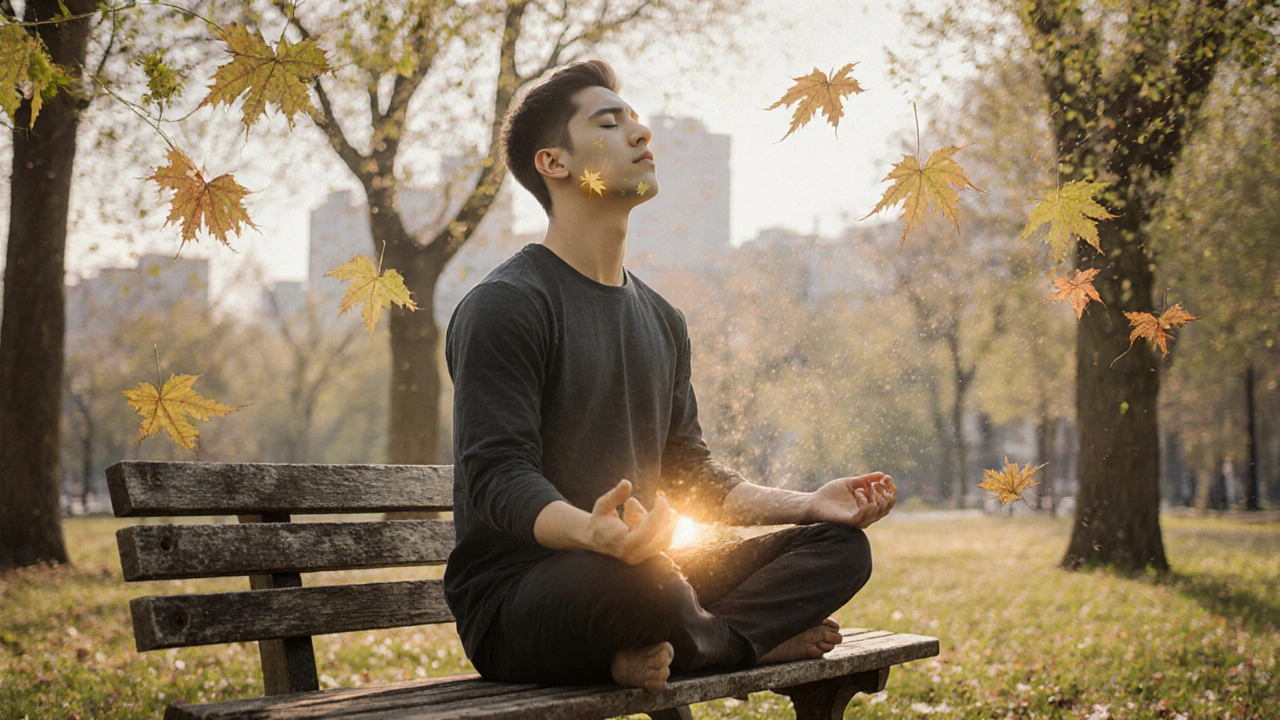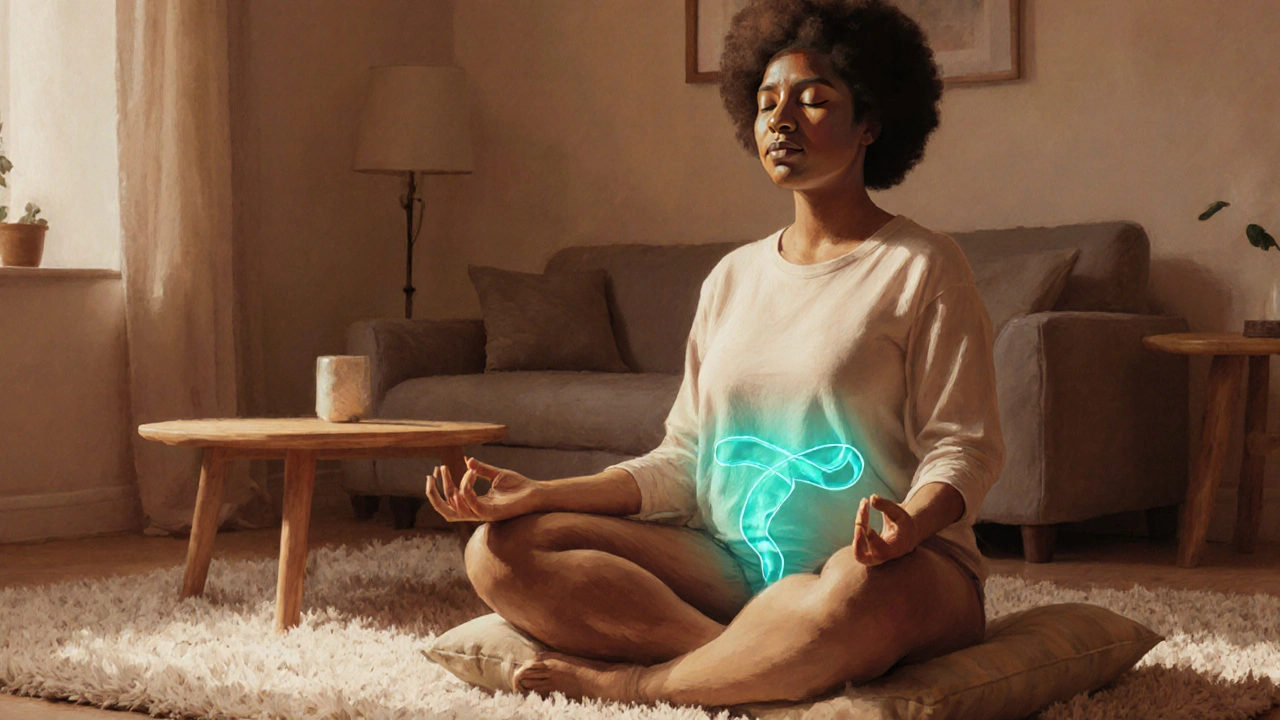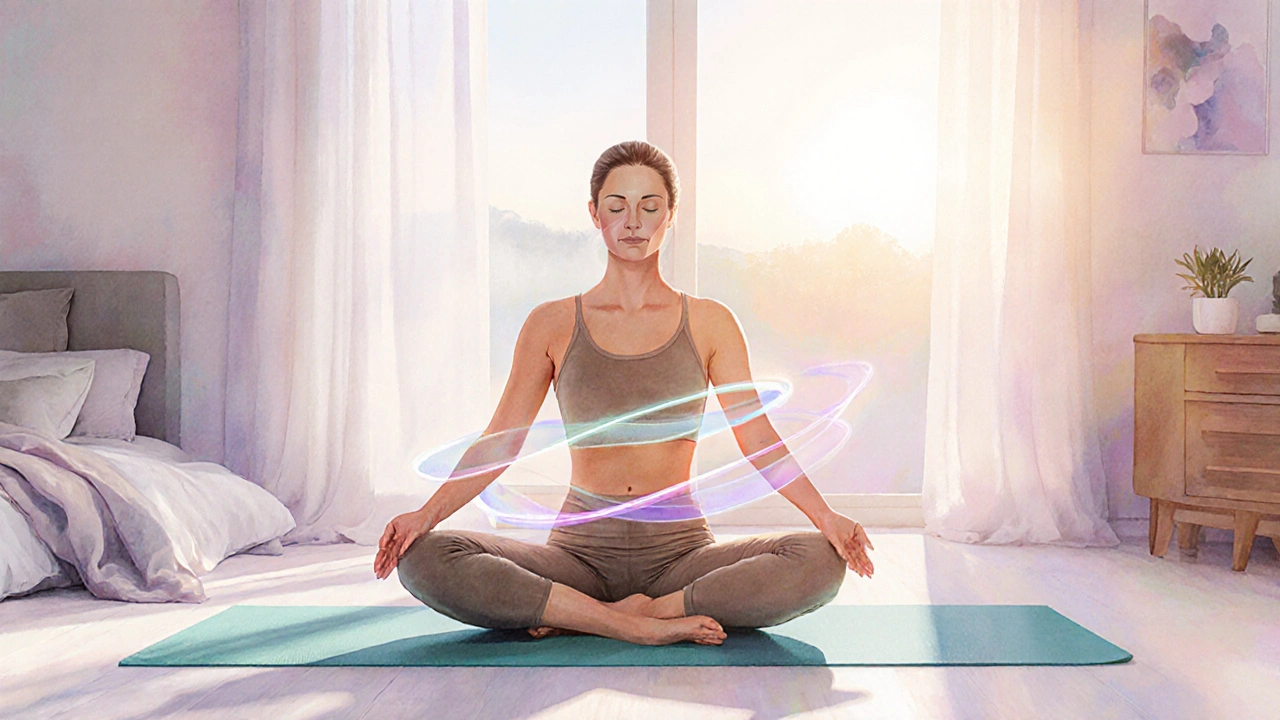Yoga for Bladder Pain is a gentle yoga practice designed to ease discomfort in the urinary bladder by targeting the pelvic floor, core muscles and nervous system. If you’ve ever felt a sharp ache while waiting for the bathroom, you know how disruptive it can be. The good news? A few minutes of intentional movement and breath work can calm the nerves, release tension, and improve bladder function without medication.
What Is Bladder Pain?
Bladder pain refers to chronic or recurring discomfort localized to the bladder or lower abdomen. It often stems from conditions such as interstitial cystitis, urinary tract infections, or pelvic floor hypertonicity. Studies from urology clinics in Australia show that up to 12% of women report bladder pain lasting longer than three months.
Key symptoms include burning on urination, urgency, and a feeling of incomplete emptying. While antibiotics treat infections, many sufferers need a holistic approach to manage muscle tightness and stress‑driven inflammation.
Why Yoga Helps
Yoga works on three fronts:
- Pelvic floor relaxation: Controlled stretching releases the levator ani and coccygeus muscles, which often stay contracted after sitting or stress.
- Stress reduction: Mindful breathing lowers cortisol, a hormone that can heighten bladder sensitivity.
- Core stability: Gentle core engagement improves bladder support without creating pressure.
Pelvic floor is a sling of muscles and connective tissue that supports the bladder, uterus and bowel. When these muscles tighten, they can push on the bladder wall, intensifying pain. Yoga gently trains the floor to lengthen and release, restoring a neutral resting tone.
Core Poses for Relief
The following three poses are the backbone of a bladder‑pain routine. They are low‑impact, safe for beginners, and each targets a different aspect of pelvic health.
Child’s Pose (Balasana)
Great for calming the nervous system and gently stretching the lower back.
- Kneel on a mat, big toes touching, knees spread wide.
- Sit back on the heels, then fold forward, arms extended or resting alongside the body.
- Hold for 1‑2 minutes, breathing into the belly.
Cat‑Cow Pose (Marjaryasana‑Bitilasana)
Mobilises the spine and gently massages the abdominal organs, encouraging blood flow to the bladder.
- Start on hands and knees, wrists under shoulders, knees under hips.
- Inhale, drop the belly, lift head and tailbone - this is Cow.
- Exhale, round the spine, tuck chin - this is Cat.
- Repeat 10‑12 cycles, syncing breath with movement.
Reclining Bound Angle Pose (Supta Baddha Konasana)
Opens the inner thighs, lowers pelvic tension and invites diaphragmatic breathing.
- Lie on your back, bring the soles of your feet together, let knees fall open.
- Place a folded blanket under each knee for support if needed.
- Rest arms by your sides, palms up, and stay for 3‑5 minutes.
Breathing & Mindfulness Techniques
While the poses do the heavy lifting, the breath is the secret sauce.
Diaphragmatic Breathing
Also called belly breathing, this technique engages the diaphragm, reduces pelvic floor compression, and signals the parasympathetic nervous system.
- Place one hand on the chest, the other on the belly.
- Inhale slowly through the nose, feeling the belly rise while the chest stays still.
- Exhale through pursed lips, allowing the belly to fall.
- Repeat for 5 breaths before each pose.
Ujjayi Breath (Victorious Breath)
Creates a soft “sea‑like” sound, helping maintain focus during movement. It also adds gentle pressure to the thoracic cavity, encouraging the pelvic floor to relax.
Mindfulness Meditation
Spend the final minute of your routine simply observing sensations in the pelvic region. Acknowledge any tightness without judgment; this reduces the brain’s pain‑amplifying signals.

15‑Minute Daily Routine
Consistency beats intensity. Stick to this short sequence twice a day (morning & evening).
- Grounding breath: 5 rounds of diaphragmatic breathing.
- Child’s Pose: 2 minutes, eyes closed.
- Cat‑Cow: 10 cycles, syncing with breath.
- Reclining Bound Angle: 4 minutes, optional gentle bounce of feet.
- Ujjayi breathing during the transition between poses to maintain focus.
- Mindfulness check‑in: 2 minutes of body scan, noting any change in bladder sensation.
Adjust duration based on comfort - the goal is a relaxed, pain‑free feeling, not a workout.
Tips, Precautions & When to Seek Help
- Hydration: Drink at least 2‑2.5L of water daily; dilute urine reduces irritation.
- Clothing: Loose, breathable fabrics avoid extra pelvic pressure.
- Avoid over‑stretching: If a pose causes sharp pain, back off or use props.
- Medical red flags: Persistent burning, blood in urine, or fever warrant a doctor’s visit.
- Combine with physiotherapy: Pelvic floor specialists can tailor manual techniques that complement yoga.
Pose Comparison Table
| Pose | Target Area | Difficulty | Suggested Hold |
|---|---|---|---|
| Child’s Pose | Lower back & pelvic floor | Easy | 1‑2min |
| Cat‑Cow Pose | Spine mobility & abdominal organs | Easy‑moderate | 10‑12 cycles |
| Reclining Bound Angle | Inner thighs & diaphragmatic breathing | Moderate | 3‑5min |
Related Concepts
Beyond yoga, a few complementary practices boost results:
- Pelvic floor physiotherapy: Hands‑on techniques that release trigger points.
- Anti‑inflammatory diet: Foods rich in omega‑3s (salmon, walnuts) lower systemic inflammation.
- Heat therapy: Warm baths relax the pelvic muscles before a session.
- Auricular acupressure: Gentle ear massage has shown modest pain reduction in small studies.

Frequently Asked Questions
Can yoga replace medication for bladder pain?
Yoga is a supportive tool, not a cure‑all. It can lessen pain and reduce reliance on medication, but you should keep any prescribed drugs unless your doctor says otherwise.
How often should I practice?
Aim for a short 15‑minute routine twice a day. Consistency matters more than length, especially during flare‑ups.
Is it safe to do these poses during a urinary tract infection?
During an active infection, focus on gentle breathing and avoid poses that compress the lower abdomen. Finish the session with a warm bath and see your GP for antibiotics.
Do I need any equipment?
A yoga mat and a couple of blankets or blocks for support are enough. Props make the poses more comfortable, especially if you have limited flexibility.
Can men benefit from this routine?
Absolutely. Men experience pelvic floor tension too, especially after long periods of sitting. The same poses help relieve prostate‑related discomfort and improve bladder control.
What’s the best time of day to practice?
Morning sessions wake up the muscles, while evening practice calms the nervous system before sleep. Doing both gives the best cumulative effect.
How long before I notice improvement?
Most people report reduced urgency and less burning after 2‑3 weeks of consistent practice. If pain persists beyond a month, combine yoga with physiotherapy or medical review.


Emily Torbert
September 26, 2025 AT 21:44Totally get that bladder pain can ruin your day
Rashi Shetty
October 5, 2025 AT 13:44While yoga offers a gentle approach to pelvic health, it is essential to recognize that not every individual will experience immediate relief. Consistency of practice, combined with proper hydration, significantly enhances outcomes. Moreover, integrating breathing techniques such as diaphragmatic breathing can modulate the autonomic nervous system 🌿. Always consult a healthcare professional before initiating a new regimen 😊
Queen Flipcharts
October 14, 2025 AT 05:44The pursuit of bodily autonomy is a fundamental right that transcends cultural boundaries.
The United States, the democratization of wellness practices such as yoga reflects our collective commitment to personal liberty.
Bladder pain, often dismissed as a trivial inconvenience, reveals deeper systemic issues within our healthcare discourse.
By employing mindful movement, we engage the parasympathetic nervous system, thereby reducing nociceptive signaling.
The Child’s Pose, with its grounding effect, serves as a metaphor for the stable foundations upon which a free society stands.
Cat‑Cow transitions echo the rhythmic ebb and flow of democratic debate, fostering flexibility in both spine and thought.
Reclining Bound Angle opens the hips much as open dialogue opens the mind to diverse perspectives.
Diaphragmatic breathing, when performed consistently, cultivates a sense of inner sovereignty that mirrors national self‑determination.
Ujjayi breath, with its controlled sound, reminds us of the disciplined cadence required for civic order.
The integration of these practices does not supplant medical treatment but rather complements it within a holistic framework.
Hydration, as emphasized in the protocol, is analogous to the flow of information essential to a transparent government.
Over‑stretching, however, must be avoided; just as overreach of authority can precipitate backlash.
When persistent symptoms arise, the prudent citizen seeks professional evaluation without delay.
The synergy between yoga and pelvic floor physiotherapy exemplifies interdisciplinary cooperation, a hallmark of a robust nation.
Ultimately, the disciplined adoption of these gentle poses empowers individuals to reclaim agency over their bodies, echoing the broader American ideal of self‑reliance.
Yojana Geete
October 22, 2025 AT 21:44My dear compatriots the very thought of a simple stretch delivering salvation feels like a saga worthy of epic poetry
Yet I must warn that neglecting proper alignment can turn this graceful dance into a cruel torment
Without the support of props one may find the hips screaming in protest
Thus I implore you to honor your body's whispers before you chase lofty promises
May the calm of Child’s Pose cradle your spirit as the moon cradles the night
Jason Peart
October 31, 2025 AT 12:44Hey there! I totally feel ya 🙌 Yoga can be a game changer for that burning feeling you get waiting for the loo. I’ve seen folks go from constant urgency to chill mode after just a couple weeks of the routine. Remember to keep your breath deep and don’t push too hard – we ain’t training for a marathon here. Keep at it and you’ll notice the diff ✨
Hanna Sundqvist
November 9, 2025 AT 04:44Sure, they want you to think yoga is a miracle cure while the pharma giants watch their profits melt away
Jim Butler
November 17, 2025 AT 20:44Let us embrace this practice with vigor and consistency, for it is through disciplined repetition that physiological adaptation occurs 💪✨
Ian McKay
November 26, 2025 AT 12:44The article contains several typographical errors; for instance, “releases” is misspelled and the bullet points lack parallel structure.
Deborah Messick
December 5, 2025 AT 04:44While the benefits of yoga are extolled, one must consider that empirical evidence remains limited and that reliance on such modalities may deter patients from seeking evidence‑based medical treatment.
Jolanda Julyan
December 13, 2025 AT 20:44I must say the guidance provided is quite thorough and I appreciate the clear step‑by‑step instructions which make it easy for beginners to follow along without feeling overwhelmed. However, there are a few nuances that deserve attention, such as the importance of maintaining a neutral spine during Cat‑Cow to avoid unnecessary strain on the lumbar region. Additionally, the suggestion to use blankets under the knees in Supta Baddha is a thoughtful inclusion, yet some may find it cumbersome and prefer a bolster for added support. It is also crucial to remember that breathing should never become forced, as this counteracts the very purpose of diaphragmatic activation. In my experience, integrating a brief mindfulness pause after each pose enhances the parasympathetic response more effectively than a single prolonged session. Moreover, ensuring a quiet environment free from distractions can significantly amplify the therapeutic outcome. Finally, consistency remains the cornerstone of progress; even a modest five‑minute practice each day can yield noticeable improvements over time.